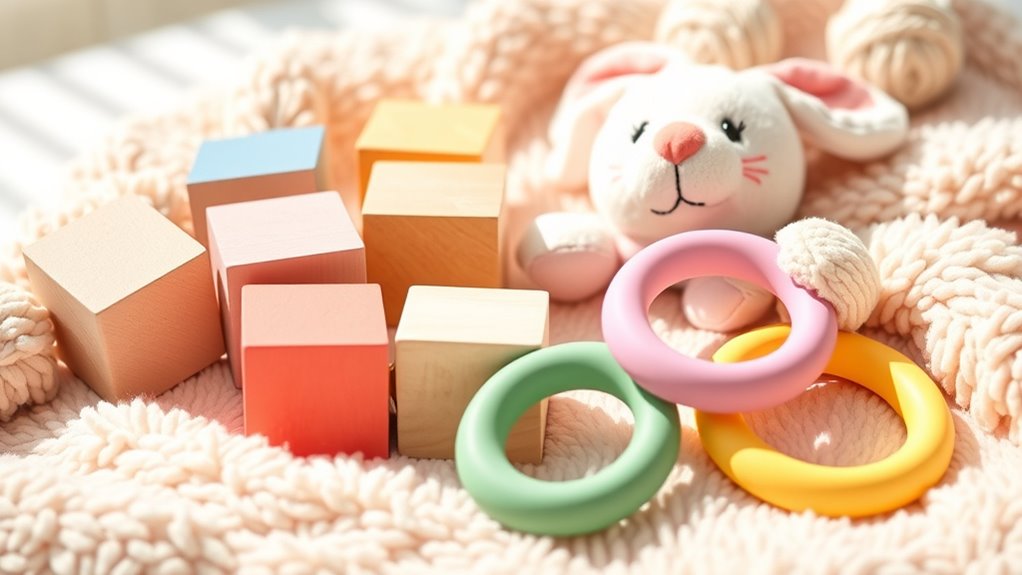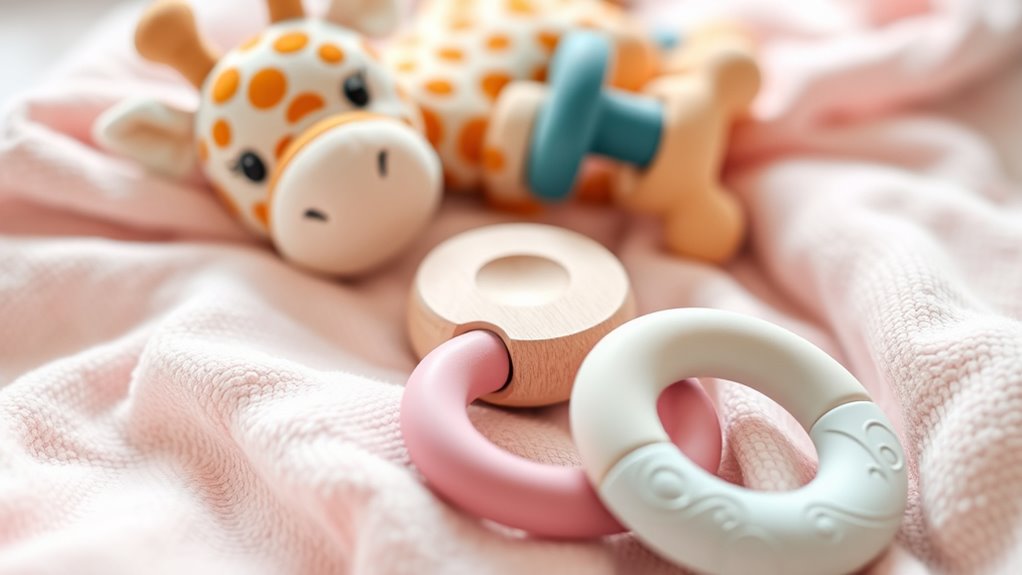To choose safe toys for babies and toddlers, focus on age-appropriate options that match their developmental stage and reduce choking risks. Check for small parts, sharp edges, and loose strings, and always select toys made from non-toxic, durable materials. Supervise playtime closely and regularly inspect toys for damage. Staying informed about safety certifications and recalls helps prevent accidents. Keep your child’s environment secure—continue exploring for more tips to ensure safe, healthy play.
Key Takeaways
- Select age-appropriate toys that match your child’s developmental stage and are free of small parts to prevent choking.
- Check for safety certifications like ASTM or CE to ensure toys meet safety standards.
- Inspect toys regularly for damage, loose parts, or wear that could pose hazards.
- Choose non-toxic, hypoallergenic materials such as BPA-free plastics, natural woods, or safe fabrics.
- Supervise playtime and keep small or unsafe toys out of reach of children under three years old.

Are you aware of the potential dangers lurking in your child’s toys? It’s a valid concern, especially since young children are naturally curious and tend to put things in their mouths. When choosing toys for babies and toddlers, safety should be your top priority. One of the most important aspects to contemplate is selecting age appropriate toys. These toys are specifically designed to suit a child’s developmental stage, ensuring they are safe and engaging without posing unnecessary risks. Age appropriate toys help reduce the chances of accidents because they’re made with appropriate size, texture, and complexity. For example, toys meant for babies have smooth edges, are free of small parts, and are durable enough to withstand chewing.
Choosing age-appropriate toys reduces risks and promotes safe, healthy play for your child.
Choking hazards are a major concern when it comes to toy safety. Small parts that can break off or fit entirely into a child’s mouth can quickly become choking hazards. Even toys that seem harmless can pose risks if they contain tiny accessories or loose components. Always check the packaging for age recommendations, as manufacturers usually specify the minimum age suitable for the toy. Avoid giving your child toys with small parts until they are old enough to understand not to put objects in their mouths. Regularly inspect toys for any damage or wear, as broken or loose pieces can unexpectedly turn into choking hazards. Additionally, choosing toys made with non-toxic materials can further ensure safety, especially for children who tend to moutheverything.
Pay attention to the materials used in toys. Non-toxic, BPA-free plastics, natural woods, and hypoallergenic fabrics are safer options, especially for babies who tend to mouth everything. Avoid toys with sharp edges, loose strings, or long cords, which can cause injuries or pose strangulation risks. Certifications from safety standards organizations, such as ASTM or CE markings, can give you extra confidence that the toy has been tested for safety.
Supervision is essential, but making informed choices about toys is your first line of defense. Keep small toys and parts out of reach of children under three, and always read labels carefully. Educate yourself about common hazards and stay updated on recalls to prevent accidents. Remember, a safe toy isn’t just about avoiding harm; it’s about fostering a positive and secure environment where your child can explore, learn, and grow without unnecessary risks. By choosing age appropriate toys and being vigilant about potential choking hazards, you’re taking crucial steps to protect your little one while encouraging healthy development and play.
Conclusion
By choosing safe toys, you’re planting seeds of joy and safety in your little one’s world. Think of yourself as a guardian angel, guiding their curious hands away from hidden dangers and toward wonder-filled adventures. When you prioritize safety, you’re building a sturdy bridge for their imagination to soar, like a kite catching the wind. Remember, a safe toy isn’t just a plaything — it’s a tiny guardian watching over your child’s joyful journey.









